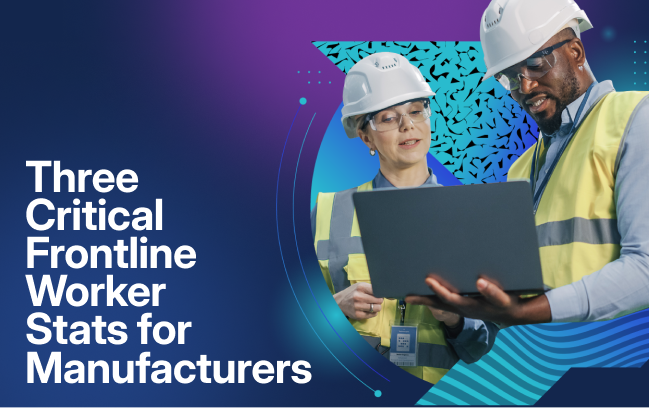September 27, 2023
7 Min. Read

L&D professionals know there are plenty of learning solutions available on the market. With so many options, it’s difficult to decipher precisely how one platform compares to the next.
Many solutions touted as the best learning systems are legacy platforms that are disjointed and inadequate for most businesses today. The right platform should make learning better and easier to access, and streamline administrative operations.
Here are some areas to consider when exploring different learning platforms and a look at how modern solutions compare to legacy learning management systems.
Scalability
Most modern enterprises need a learning management system built to scale. Whether adding more employees as you grow or rolling out learning programs for new franchisees, today’s businesses need a learning solution that can easily accommodate large numbers of learners and simplify user management.
Integrations
Unlike legacy systems, which are notoriously difficult to integrate with standard technology stacks, next-generation learning management solutions offer out-of-the-box integration options with the most popular enterprise tools and platforms—including HRIS, collaboration tools like WebEx and Microsoft Teams, and single-sign-on (SSO) solutions. These integrations allow for more seamless user experiences and help automate administrative processes like user account creation.
Flexible User Management
Many modern businesses are complex organizations that no longer operate under traditional top-down organizational structures; these days, organizations tend to resemble interconnected networks of people who often hold multiple roles. Legacy learning platforms are ineffective for these organizations because they can’t customize user roles according to their needs.
Other learning solutions allow for much more flexibility and customization in user management. The business can decide the permission levels for different groups of users, as well as create separate and unique learning environments for different brands or business units, while managing everything through one simple platform. This enables organizations to offer targeted learning experiences that are more effective at achieving business results—including distinct programs for employee, customer, and partner training.
Simplified Course Creation
Legacy learning platforms make it difficult to create and manage training programs for today’s complex business environments, especially for different groups of learners. In contrast, course creation and distribution are a breeze in modern learning solutions. They empower L&D leaders and authorized training managers to piece together various content types to create courses in minutes, share resources with the relevant learners, and maximize the potential of each learning initiative.
Future-Oriented Design
If an LMS is not engaging and intuitively designed, employees won’t want to learn, and training won’t be effective. Offering a learning environment that makes learning fun and rewarding for all is a much better approach to encourage continuous learning.
Mobile Capabilities
Legacy platforms were designed long before mobile devices like smartphones and tablets became facets of everyday life. As a result, they don’t always deliver the best mobile learning experiences, and often lack mobile capabilities altogether. While many learning platforms can be accessed via mobile devices, not all are intentionally designed with mobile learners in mind, making it a pain to access or view training resources on smaller screens.
It’s essential to choose a learning solution that offers a native mobile app if your workforce includes team members who spend a lot of time on the frontlines, on the field, or away from a desk or computer for other reasons. A native mobile app optimizes learning resources and platform features for viewing on smartphones and tablets, delivering a seamless experience for learners no matter which device they use.
Blended Learning
Legacy platforms might be sufficient to facilitate basic online learning, but things tend to get messy when training needs are more complicated. Many businesses must incorporate in-person and online training components to teach specific skills effectively.
Modern learning management systems enable businesses to create learning programs that incorporate a range of learning methods, including online coursework, instructor-led group classes, one-on-one coaching, and in-person or observational learning (also known as “on-the-job training.”) Everything is accessed, tracked, and managed in one place.
Social and Collaborative Learning
Much like mobile learning, social and collaborative learning are relatively new phenomena fueled by the rise of the Internet and the powerful technology now integrated into our daily lives. These innovations sparked new forms of learning that involve communicating and sharing information with peers, groupwork, and engaging experiences that mimic social media interactions, but legacy platforms often lack these capabilities.
The best learning platforms for businesses today are those that securely facilitate social and collaborative learning in conjunction with more traditional learning methods. Features like messaging, news feeds, group chats, and gamification keep employees engaged and help build a culture of continuous learning.
Talent Development
Compared to a modern LMS, legacy systems are not multifaceted solutions. They don’t include talent development tools that enable businesses to connect learning with performance. Next-generation learning platforms are designed for the workforces of tomorrow, which means they help businesses deliver learning that supports the entire employee lifecycle—from onboarding and new hire training to ongoing professional development. They leverage innovative approaches like AI-powered learning, personalized career paths, and performance management so businesses can re-skill and up-skill their best employees to lead the organization forward.
Partnership
A learning platform is only as good as the team behind it. Implementing new technology is a complex undertaking that requires a dedicated team of experts. No matter how great a platform seems on the surface, the real power rests in true partnership.
Agile Product Development
One of the most significant drawbacks of a legacy learning management system is that it needs to be updated more to meet the demands of modern workforces. Years of piecemeal solutions brought together through mergers and acquisitions result in overly complicated systems that are difficult to upgrade swiftly.
Other learning platform providers practice much more agile product development, allowing for more innovation and continuous improvement that ultimately results in a better experience for learners and more impactful results for the business.
Customer Support
Selecting a learning technology provider you trust is essential to success. Be sure to go with a team that’s available, responsive, and sensitive to your organization’s needs and challenges.
Not all learning solutions are built the same. Knowing what learning features and functionalities matter most to your organization is essential to choosing the best solution. You can learn more about what makes a learning solution great on our blog, or connect with us today to explore the right options for your business.


